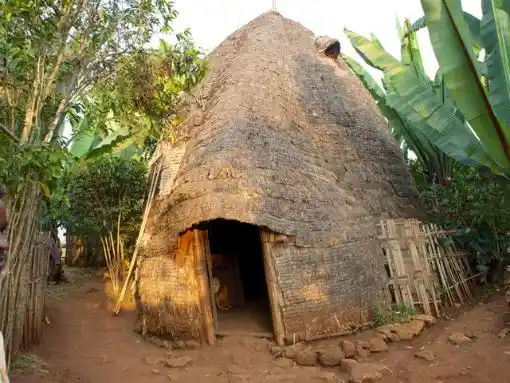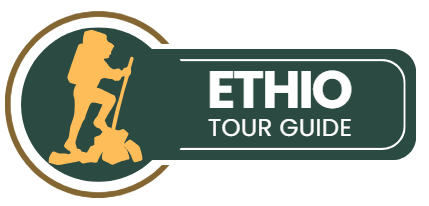Cultural Attractions of Ethiopia
Dorze People

The Dorze are a small ethnic group inhabiting the Gamo Gofa Zone of the Southern Nations, Nationalities, and Peoples Region in Ethiopia. They speak the Dorze language, an Omotic tongue.
According to Ethnologue, the Dorze numbered 29,000 individuals (1994 census), of whom 9,910 were monolingual. They primarily live in the southern parts of the country, though some have migrated to Addis Ababa and other regions. Many reside in villages near the cities of Chencha and Arba Minch.
Weaving is a primary profession for a number of Dorze. Their polyphonic multi-part vocal music features a sophisticated use of hocket. The men tend to the maize and bean harvests on the fields, the boys chase the goats and cattle across the meadows and the women care for home and hearth.
Mursi Tribe
 The Mursi number about 5,000 and are primarily pastoralists categorized in the Nilo-Saharan language family. Surrounded by mountains between the Omo River and its tributary the Mago, the home of the Mursi is one of the most isolated regions of the country.The Mursi are Known for their lip plate tradition; an unmarried woman’s lower lip will be pierced and then progressively stretched over the period of a year. A clay disc indented like a pulley wheel is squeezed into the hole in the lip. As it stretches, ever-larger discs are forced in until the lip, now a loop, is so long it can sometimes be pulled right over the owner’s head. The size of the lip plate determines the bride price, with a large one bringing in fifty head of cattle. The women make the lip plates from clay, color them with ochre and charcoal, and bake them in a fire.
The Mursi number about 5,000 and are primarily pastoralists categorized in the Nilo-Saharan language family. Surrounded by mountains between the Omo River and its tributary the Mago, the home of the Mursi is one of the most isolated regions of the country.The Mursi are Known for their lip plate tradition; an unmarried woman’s lower lip will be pierced and then progressively stretched over the period of a year. A clay disc indented like a pulley wheel is squeezed into the hole in the lip. As it stretches, ever-larger discs are forced in until the lip, now a loop, is so long it can sometimes be pulled right over the owner’s head. The size of the lip plate determines the bride price, with a large one bringing in fifty head of cattle. The women make the lip plates from clay, color them with ochre and charcoal, and bake them in a fire.
Konso Village

Konso, named after the Konso people, is known for its religious traditions, waga sculptures, and nearby fossil beds, which is an archaeological site of early hominids. The site was added to the UNESCO World Heritage Tentative List on September 30, 1997 due to its purported universal cultural significance and official made a World Heritage Site in 2011. Konso society is largely agricultural and involves the irrigation and terracing of mountain slopes. Staple crops include sorghum and corn, with cash crops including cotton and coffee. Cattle, sheep, and goats are raised for food and milk.
Group members also erect carvings (wagas), which are created in memory of a dead man who has killed an enemy or animal.
Karo People
 The Karo people are an ethnic group who live near the banks of the omo valley. They excel in face and body painting which is practiced in preparation of their dances and ceremonies. Both sexes do it as a way to be more visually appealing and attractive, while looking intimidating to rivals. They use locally found chalk, mineral rock, iron ore and charcoal to decorate their bodies with different types of design. Using white chalk and red ochre, the women create intricate circle, spiral and cross-hatched designs in order to look more beautiful and stand out of the crowd.
The Karo people are an ethnic group who live near the banks of the omo valley. They excel in face and body painting which is practiced in preparation of their dances and ceremonies. Both sexes do it as a way to be more visually appealing and attractive, while looking intimidating to rivals. They use locally found chalk, mineral rock, iron ore and charcoal to decorate their bodies with different types of design. Using white chalk and red ochre, the women create intricate circle, spiral and cross-hatched designs in order to look more beautiful and stand out of the crowd.
The Karo tribe speak the Karo language which is an Omotic language. The Karo language is described as being closely related to its neighbors, Hamer and Banna and is considered a dialect of Hamer.
